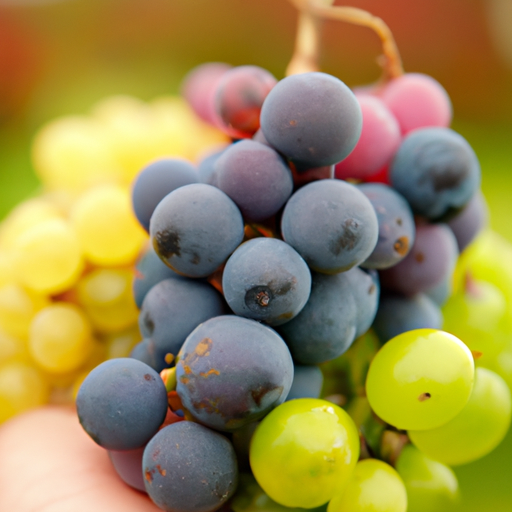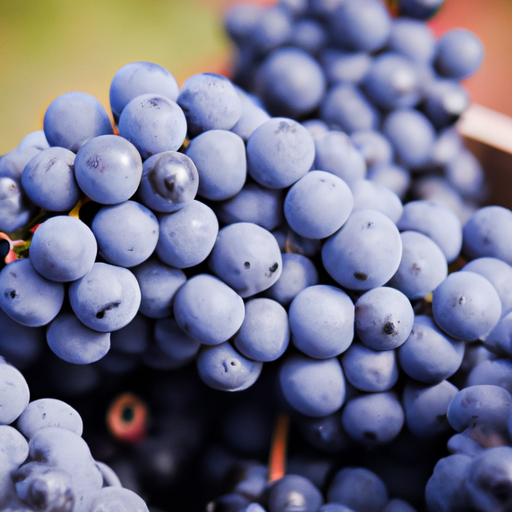
The Art of Harvesting: Exploring the Process of Handpicking Fruits for Wine Production
The process of transforming fruit into wine is a centuries-old tradition that has captivated wine enthusiasts around the world. At the heart of this enchanting process lies the art of harvesting, where fruits are carefully handpicked to ensure the highest quality of wine production. This meticulous process involves a deep understanding of the fruit’s ripeness, the vineyard’s terroir, and the winemaker’s expertise.
Handpicking fruits for wine production is a labor-intensive task that requires a skilled team of harvesters. Unlike mechanical harvesting, which can be quick and efficient but lacks the finesse of human touch, handpicking allows for a more selective approach. Each fruit is carefully examined, ensuring that only the ripest and healthiest grapes are chosen. This attention to detail is crucial, as the quality of the fruit directly impacts the final product.
The timing of the harvest is of utmost importance. Winemakers must strike a delicate balance between allowing the fruit to fully ripen on the vine and avoiding overripeness. The decision to harvest is often guided by the grape’s sugar levels, acidity, and flavor development. This requires constant monitoring and tasting, as the optimal moment can vary from vineyard to vineyard and even within different sections of the same vineyard.
The terroir, or the unique combination of soil, climate, and geography, also plays a significant role in the harvesting process. Different grape varieties thrive in different terroirs, and winemakers must consider these factors when determining the ideal time to harvest. For example, grapes grown in cooler climates may require a longer growing season to reach their full potential, while those in warmer regions may ripen more quickly.
Once the decision to harvest has been made, the handpicking process begins. Harvesters carefully navigate the vineyard, selecting clusters of grapes that meet the desired criteria. This requires a keen eye and a gentle touch, as any damage to the fruit can affect the quality of the wine. The harvested grapes are then placed in small containers, ensuring that they remain intact and undamaged during transportation to the winery.
The art of handpicking fruits for wine production extends beyond the physical act of harvesting. It is a deeply rooted tradition that celebrates the connection between the land, the fruit, and the winemaker. Each vineyard has its own unique approach to harvesting, often passed down through generations. This knowledge and experience are invaluable, as they contribute to the overall character and quality of the wine.
In conclusion, the art of handpicking fruits for wine production is a vital step in the enchanting process of transforming fruit into wine. It requires a skilled team of harvesters, a deep understanding of the fruit’s ripeness, and a respect for the vineyard’s terroir. This meticulous process ensures that only the finest grapes are selected, resulting in wines of exceptional quality and character. The art of harvesting is a testament to the dedication and passion of winemakers around the world, who continue to uphold this timeless tradition.
From Vine to Glass: Unveiling the Journey of Fruit Transformation into Wine

The process of transforming fruit into wine is a fascinating journey that begins in the vineyard and ends in the glass. From the careful cultivation of the grapes to the meticulous fermentation process, every step is crucial in creating a truly enchanting beverage. In this article, we will unveil the journey of fruit transformation into wine, exploring the various stages and techniques involved.
It all starts with the vineyard, where the grapes are grown and nurtured. The selection of the right grape variety is essential, as different grapes yield different flavors and characteristics. The vineyard must also provide the ideal conditions for the grapes to thrive, including the right amount of sunlight, water, and nutrients. Skilled viticulturists carefully tend to the vines, ensuring they are pruned, trained, and protected from pests and diseases.
Once the grapes have reached their optimal ripeness, it is time for harvest. This is a critical moment, as the grapes must be picked at the perfect time to ensure the desired flavor and sugar levels. Harvesting can be done by hand or by machine, depending on the vineyard’s size and preferences. Handpicking allows for greater selectivity and ensures that only the best grapes are chosen.
After harvest, the grapes are transported to the winery, where the transformation process begins. The first step is crushing and destemming, where the grapes are gently crushed to release their juice. This juice, known as “must,” contains the sugars, acids, and flavors that will eventually become wine. The must is then transferred to fermentation vessels, where yeast is added to initiate the fermentation process.
Fermentation is a crucial stage in winemaking, as it is during this process that the sugars in the must are converted into alcohol. The yeast consumes the sugars and produces alcohol and carbon dioxide as byproducts. The temperature and duration of fermentation can vary depending on the desired style of wine. Red wines typically undergo a longer fermentation process, allowing for greater extraction of color and tannins from the grape skins.
Once fermentation is complete, the wine is separated from the solids through a process called racking. This involves transferring the wine to a clean vessel, leaving behind any sediment or lees. The wine is then aged, either in stainless steel tanks or oak barrels, to develop its flavors and aromas. Aging can range from a few months to several years, depending on the type of wine and the winemaker’s preferences.
After aging, the wine is clarified and stabilized to remove any remaining impurities. This can be done through fining, filtration, or both. Fining agents such as bentonite or egg whites are added to the wine to bind with any solids or tannins, making them easier to remove. Filtration involves passing the wine through a series of filters to remove any remaining particles.
Finally, the wine is ready for bottling. It is carefully transferred into bottles, sealed with corks or screw caps, and labeled. The bottles are then stored in a cellar or warehouse, where they can further mature and develop. When the time is right, the wine is uncorked and enjoyed by wine enthusiasts around the world.
The journey of fruit transformation into wine is a labor of love, requiring skill, patience, and a deep understanding of the grapes and the winemaking process. From the vineyard to the glass, every step is carefully orchestrated to create a truly enchanting beverage. So the next time you raise a glass of wine, take a moment to appreciate the journey it has taken to reach your palate.
The Magic of Fermentation: Unraveling the Enchanting Process of Turning Fruit into Wine
The process of turning fruit into wine is a truly enchanting one. It is a magical transformation that takes place through the power of fermentation. Fermentation is a natural process that occurs when yeast consumes the sugars in fruit and converts them into alcohol. This process has been used for centuries to create the delicious and intoxicating beverage that we know as wine.
The first step in this enchanting process is the selection of the fruit. Different fruits have different characteristics that will ultimately affect the flavor and aroma of the wine. Grapes are the most commonly used fruit for winemaking, but other fruits such as apples, pears, and berries can also be used. The quality of the fruit is of utmost importance, as it will determine the quality of the final product.
Once the fruit has been selected, it is time to crush it. This is done to release the juice from the fruit, which will be the base for the wine. Traditionally, grapes were crushed by stomping on them with bare feet, but nowadays, mechanical crushers are commonly used. The crushed fruit, known as must, is then transferred to fermentation vessels.
The next step in the enchanting process is the addition of yeast. Yeast is a microorganism that consumes the sugars in the must and converts them into alcohol. There are two types of yeast that can be used for winemaking: wild yeast, which is naturally present on the fruit, and cultured yeast, which is commercially available. Cultured yeast is often preferred because it produces more predictable results.
Once the yeast has been added, the fermentation process begins. This is where the magic truly happens. As the yeast consumes the sugars in the must, it produces alcohol and carbon dioxide. The carbon dioxide is released as gas, creating bubbles that can be seen during fermentation. This is why fermentation vessels are equipped with airlocks, to allow the gas to escape without letting oxygen in.
During fermentation, the temperature and conditions must be carefully controlled. The ideal temperature for fermentation varies depending on the type of fruit being used, but generally falls between 60 and 80 degrees Fahrenheit. Too high of a temperature can result in off-flavors, while too low of a temperature can slow down or halt fermentation altogether.
The length of fermentation also varies depending on the type of fruit and the desired style of wine. It can take anywhere from a few days to several weeks. Throughout the fermentation process, the wine is monitored closely to ensure that everything is progressing as it should. This includes checking the sugar levels, acidity, and pH of the wine.
Once fermentation is complete, the wine is ready for the next stage of the enchanting process: aging. Aging allows the flavors and aromas of the wine to develop and mellow over time. This can be done in a variety of vessels, such as oak barrels or stainless steel tanks. The length of aging also varies depending on the type of wine, with some wines aging for just a few months and others for several years.
Finally, after aging, the wine is ready to be bottled and enjoyed. The enchanting process of turning fruit into wine is complete, and the result is a beverage that is both delicious and intoxicating. From the careful selection of the fruit to the meticulous monitoring of fermentation, every step in the process is crucial to creating a wine that is truly enchanting. So the next time you raise a glass of wine, take a moment to appreciate the magic that went into creating it.






